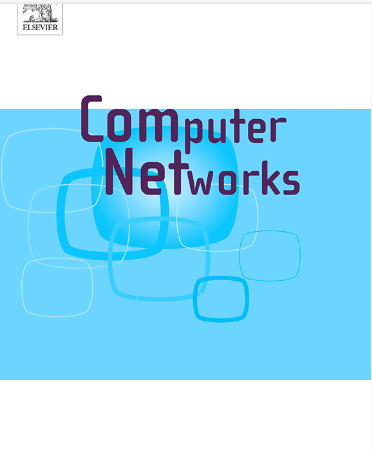Edge-caching assisted underlay spectrum sharing in large-scale cognitive radio networks
IF 4.4
2区 计算机科学
Q1 COMPUTER SCIENCE, HARDWARE & ARCHITECTURE
引用次数: 0
Abstract
Edge-caching and spectrum sharing are promising techniques to meet the fast-growing wireless transmission requirements. In this paper, we propose an edge-caching based underlay spectrum sharing scheme for a large-scale cognitive radio network. In the primary system, primary users (PUs) request files from their associated base stations. In the secondary system, secondary transmitters (STs) intend to communicate with their receivers by sharing the spectrum, and secondary helpers (SHs) actively cache the files of primary system. In the device-to-device (D2D) communication range around each PU, the SH that has cached the file requested by the PU and has the shortest distance to the PU is selected for the cooperative file transfer. With the cooperation from SHs, the transmission quality towards PUs can be greatly improved, and STs can achieve more opportunities for the spectrum sharing. An optimization problem is formulated to maximize the area throughput of secondary system under the performance constraint of primary system. We propose a low-complexity CVX-SA algorithm by decomposing the original problem into two subproblems to jointly determine the file caching policy and system critical parameters. Numerical results show that, compared with the benchmark schemes, our proposed scheme can significantly improve the area throughput of the secondary system.
边缘缓存辅助大规模认知无线电网络的底层频谱共享
边缘缓存和频谱共享是满足快速增长的无线传输需求的有前途的技术。本文提出了一种基于边缘缓存的大规模认知无线电网络底层频谱共享方案。在主系统中,主用户(pu)从其关联的基站请求文件。在辅助系统中,辅助发送器(STs)通过共享频谱与接收器进行通信,辅助辅助器(SHs)主动缓存主系统的文件。在每个PU周围的D2D (device-to-device)通信范围内,选择缓存了PU请求的文件且距离PU最近的SH进行协同文件传输。通过与SHs的合作,可以大大提高向pu的传输质量,并且STs可以获得更多的频谱共享机会。在一次系统的性能约束下,提出了二次系统面积吞吐量最大化的优化问题。提出了一种低复杂度的CVX-SA算法,将原问题分解为两个子问题,共同确定文件缓存策略和系统关键参数。数值结果表明,与基准方案相比,本文提出的方案能显著提高二次系统的面积吞吐量。
本文章由计算机程序翻译,如有差异,请以英文原文为准。
求助全文
约1分钟内获得全文
求助全文
来源期刊

Computer Networks
工程技术-电信学
CiteScore
10.80
自引率
3.60%
发文量
434
审稿时长
8.6 months
期刊介绍:
Computer Networks is an international, archival journal providing a publication vehicle for complete coverage of all topics of interest to those involved in the computer communications networking area. The audience includes researchers, managers and operators of networks as well as designers and implementors. The Editorial Board will consider any material for publication that is of interest to those groups.
 求助内容:
求助内容: 应助结果提醒方式:
应助结果提醒方式:


